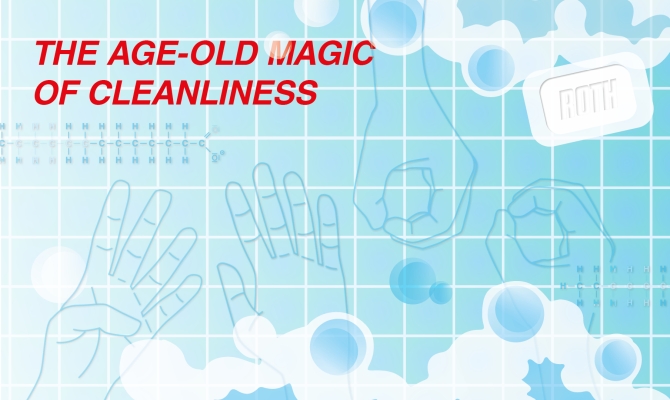
Under pressure
Imagine you’re filtering dirty water through a fine mesh net: The water and small dirt particles will flow through, but larger particles will be unable to pass through the filter and be left behind. However, if these larger particles are small pieces of a dishwashing sponge, for example, then some of the water will also remain in these soaked pieces of the sponge. The sponge pieces create suction on the water through the filter (osmosis), thus exerting pressure on the filter mesh. This pressure will be stronger or weaker depending on the number of sponge pieces.
In our bloodstream, the substance albumin acts in a similar manner to regulate the pressure in our arteries, veins and capillaries. But what exactly is this pressure, why is it so important, and what role does albumin play in it?
What is colloid osmotic pressure?
Colloid osmotic pressure, also known as oncotic pressure, is a form of osmotic pressure generated by colloidal proteins in the blood fluid (plasma). These proteins, especially albumin, are too large to pass through the capillary walls into the surrounding tissue. Instead, they remain in the blood and ensure that water is drawn from the tissue back into the blood vessels. This prevents fluid from leaking into the tissue and accumulating there – a process that could cause swelling (edema) and organ damage.
Colloid osmotic pressure could therefore be described as a kind of “water attraction” of the blood. It maintains a balance in the fluid distribution between blood and tissue and ensures that our cells neither “dry out” nor “drown”.
The role of albumin in colloid osmotic pressure
Albumin accounts for about 60% of the total proteins in blood plasma, and therefore plays the most important role in maintaining colloid osmotic pressure. Due to its high concentration and its large, unique molecular structure, albumin generates most of this pressure. It creates the suction that keeps the fluid in the bloodstream and prevents too much water from leaking into the surrounding tissue.
If albumin is missing or its concentration is too low, the colloid osmotic pressure drops – for example, due to liver diseases in which less albumin is produced, or kidney problems in which albumin is excreted in the urine. As a result, fluid accumulation and edema in the tissue can occur. A more commonly known example of this is “ascites”, in which fluid accumulates in the abdominal cavity.
Clinical relevance of colloid osmotic pressure
A change in colloid osmotic pressure can cause a variety of health problems. As already mentioned, patients with liver diseases such as cirrhosis, or who have kidney diseases in which albumin is excreted in the urine, are particularly affected. In these patients, plasma albumin is therefore regularly monitored by laboratory analyses.
Colloid osmotic pressure is also closely monitored in intensive care medicine, as an imbalance can quickly lead to circulatory problems and organ damage.
When albumin concentrations in the blood are dangerously low, human albumin is administered as an infusion to restore colloid osmotic pressure and normalise fluid distribution in the body. It’s a clear indication of just how crucial albumin is to maintaining fluid balance in the human body.
Research and laboratory applications
Nevertheless, the molecule albumin also plays an important role in the research laboratory – especially in areas such as biochemistry, molecular biology, cell biology and physiology. In such cases, albumin is often used as a model protein to simulate fluid flows and pressure conditions in biological systems. In cell culture, albumin also stabilises cell membranes and ensures that the correct balance between intracellular and extracellular fluid is maintained.
In the interests of science, we are also working hard to expand our product range with a reliable and tailored range of options, in order to improve people’s lives. Find out more for yourself at: www.carlroth.com
https://edoc.hu-berlin.de/bitstream/handle/18452/13664/cclm.1980.18.4.233.pdf?sequence=1
https://www.europlasma.at/ueber-plasma/die-wichtigsten-produkte-aus-plasma
https://www.blutspenden.de/rund-ums-blut/blutbestandteile-blutzellen-und-plasma/





